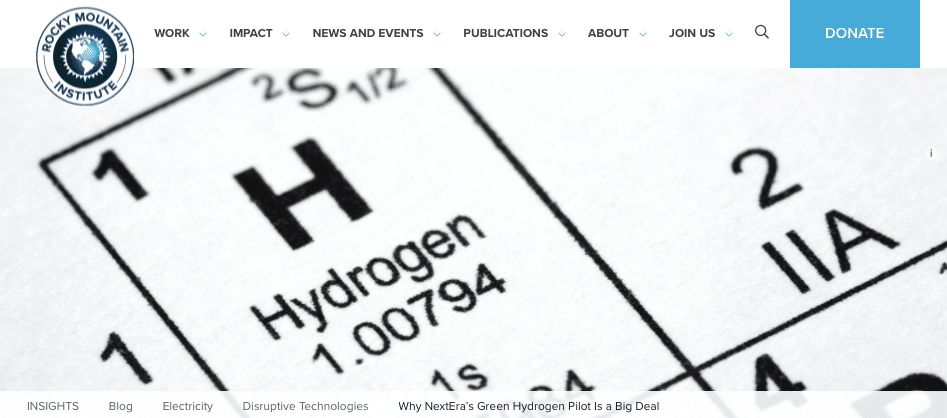Rocky Mountain Institute’s Christian Roselund, in this 5 August 2020 article explores the significance of recent green hydrogen pilots by two of the largest public utilities in the U.S. Excerpt below:
In its recent quarterly results call, US power giant NextEra announced that its utility subsidiary Florida Power & Light (FPL) plans to build a 20 megawatt electrolyzer to produce hydrogen from water. If approved by regulators, the plant will run on power from otherwise curtailed solar and feed hydrogen to burn in FPL’s Okeechobee gas plant.
On the global stage, the scale of this investment does not raise eyebrows. “Green” hydrogen electrolysis plants of a similar scale are underway in a number of other nations, and some are scheduled for completion by the end of this year. In the United States, the Los Angeles Department of Water and Power’s (LADWP) plan to convert its coal-fired Intermountain Power Plant in Utah to a mix of hydrogen and gas will involve a much larger supply of hydrogen from electrolysis.
However, what is important is not just the megawatts. It is why these two utilities are investing in this technology. LADWP has stated that its Intermountain hydrogen project is necessary to meet the utility’s 100 percent renewable energy target. NextEra has no such mandate forcing its hand; instead this is a voluntary move by a company that is also the nation’s largest wind and solar developer.
And this points to what is exciting about NextEra’s announcement: the potential to scale. FPL has plans to deploy 30 million solar panels by 2030, which at today’s wattage for utility-scale solar is around 12 gigawatts (GW). The utility also has an enormous fleet of gas plants.
Additionally, parent company NextEra own substantial solar, wind, and gas infrastructure across the nation. If this project is successful, there are a lot of places where NextEra could potentially site hydrogen electrolyzers

